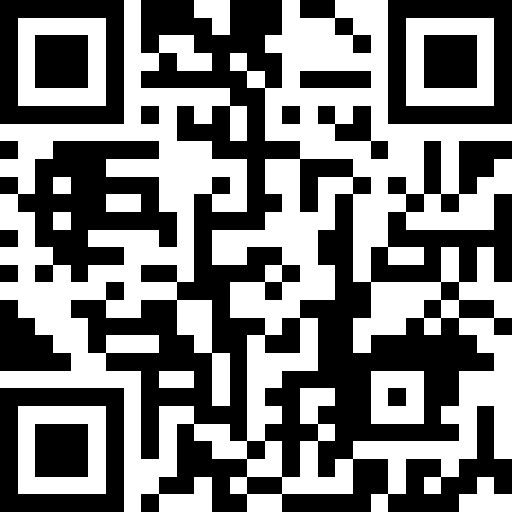Information
-
Client Name
-
Worksite
-
Location
-
Main contractor on site
-
Site Foreman
-
Conducted on
-
Prepared by
Executive Summary
-
undefined
PCBU Safety Management
PCBU - Main Contractor
-
Name of main contractor
-
Main contractor has a SSSP or PSMP available and used
-
Main hazard and risk register is available and reflects the hazards and risks on site
-
Training and competency register available of main contractor employees
-
Evidence of regular safety meetings held in the last 30 days (min of two)
-
Evidence of regular inspections held in the last 30 days (min of two)
-
Contractor has an active incident register
-
Last incident recorded
-
Incidents recorded shows proof of investigations and sign off
-
Updated Hazardous Substances Inventory available
PCBU - Sub Contractor
-
Name of sub contractor
-
Evidence that the main contractor has evaluated the SSSP
-
Main hazard and risk register is available and reflects the hazards and risks on site
-
Training and competency register available of all workers on site
-
Evidence of regular safety meetings held in the last 30 days (min of two)
-
Evidence of regular inspections held in the last 30 days (min of two)
-
Emergency plan available for high risk activities
-
Contractor has an active incident register
-
Incidents recorded shows proof of investigations and sign off
-
Updated Hazardous Substances Inventory available
Site Access, Emergency Response and Safety
-
Worksite is secure against unauthorised entry
-
Hazard board visible and reflect current data on entry to the site
-
Adequate site signage (speed limits/office/first aid etc.) visible
-
Access to site adequately controlled
-
There is a sign-in for visitors and contractors. Regularly completed
-
Site-specific health and safety inductions are carried out for all persons
-
Site wide emergency response/evacuation plan visible
-
List of First Aiders and Fire Wardens available or visible
-
Evacuation route signposted
-
Clear sign-posted assembly point
-
Working areas and access ways are clear and unobstructed
-
Building/work material stacked in an orderly and safe manner
-
Safety caps on all vertical/rio bars that present an impaled risk
-
Other related observations to this section
Health Management
-
Office space is tidy and acceptable
-
Access to hot water available or plan in place for access
-
Access to clean drinking water
-
Toilets, changing facilities available and clean
-
Bins and skips available for waste management and not overfilled
-
UV protection managed (sunscreen availble/PPE)
-
Workers informed of asbestos-related hazards if on-site
-
Dust, vibration and noise are effectively managed on-site
-
Access to first aid and first aiders on site
-
Name of trained First Aider
-
Other related observations to this section
Hazard and Risk Management
-
Evidence of a risk assessment method/tool being used as part of hazard management
-
Is there evidence that WorkSafe has been notified for particular hazardous work?
-
Permit to work system (PTWS) are used and documents all completed by PI/PR/users
-
JSA/TA/SWMS/HITRS used for any activities completed and signed by all workers involved in the task
-
Rescue plan available for High Risk activities and executable
-
Fire extinguishers available, in date and secured
-
PPE is being worn related to site hazard board, risk register and site activities
-
Isolation process used (LOTO) and followed as per site rules
-
Other related observations to this section
Working at heights and general fall protection
-
Fall risks into open pits, trenches, voids or openings have been managed
-
Edge protection in place as means of fall prevention
-
Workers working at height have minimum required training (US 23229) or evidence or informal training and competency
-
For harness use only: A feasible rescue plan is in place
-
Height safety equipment used is date and six-month certified
-
Anchors are an approved or certifed anchor with the correct rating and set up to prevent falls/pendulum
-
Height safety systems used is appropriate for the task and fall clearance
-
Safety nets installed by a competent person, secured without debris on top
-
Stairways are fitted with handrails
-
Workers using MEWP for working at height doing it safely
-
MEWP six month certification on machine and in date
-
MEWP logbook completed or machine inspection app
-
MEWP operator ticketed for specific machine
-
MEWP set-up is safe and outriggers have been deployed on stable ground
-
Isolation of work area in place to prevent unauthorised access during MEWP operations
-
Other related observations to this section
Mobile Plant including forklifts
-
Mobile plant on site:
-
Those operating mobile plant work safely and in compliance with site rules
-
Mobile plant is isolated from other workers and machinery / Warning signs in place
-
Mobile plant operators are licenced/trained
-
Evidence of plant inspections completed
-
Does the plant have a current in-service certification? Example: Licence/ WOF
-
Operating warning lights and audible alarms are working during operations
-
Is the plant fitted with a ROPS/ MOPS
-
If the equipment is equipped with a safety belt, is the operator using the belt during operating the machine?
-
Other related observations to this section
Scaffolds
-
Those working on scaffold are working safely
-
Mobile scaffold above 2 metes is tagged and erected by a competent person
-
Mobile scaffold is set up on firm area, wheels locked, fully decked with toeboards and edge protection in place
-
Scaffold tag at access points and within required inspection date
-
Evidence that the scaffold was erected by a competent person
-
Scaffold components are in good condition<br>
-
Scaffold are fully decked and no loose scaffold planks
-
Scaffolds have edge protection and toeboards on all levels
-
Edge-to-face gaps are less than 300mm wide
-
Those working below the scaffold are protected or area is identified as an exclusion zone
-
Access to the scaffold is clear, safe and ladders secured
-
Are special scaffolds designed by a Chartered Professional Engineer?
-
Other related observations to this section
Lifting and Equipment
-
Manual handling risks identified and adequate risk controls in place. (examples: no job rotation, lighter loads, trolleys, lifting equipment, etc)C
-
Lifting equipment(chains, slings, strops ect) have a current certification tag attached
-
Lifting plant has current certification and vehicle certification
-
Clearly defined exclusion zones are in place
-
Inspection record of lifting equipment and machinery available and completed
-
SWL information displayed and clearly avaible
-
Lift plan in place and available
-
Crane operators are licenced and trained
-
Crane set up on stable ground, stabilisers fully extended and safely positioned
-
MAD maintained during crane operation
-
Use of dogman during lifts (depends on the complexity and lift plan)
-
Load rigged by competent person/rigger
-
Other related observations to this section
Ladders
-
Ladders are compliant with industry requirements (AS/NZ 1892,120kg)
-
Ladders are in good, safe working condition
-
Ladders are properly secured
-
Ladders are suitable for the job
-
Workers using the ladders is using it safely
-
Other related observations to this section
Tools and equipment
-
Are those working with tools and equipment working safely?
-
All tools and equipment have guards in place around moving parts, drive belts, chains and blades
-
Angle grinders have handle to prevent kick back
-
Disks and blades are correct size and in good condition
-
Workstations are well set up and fir for purpose
-
Electrical tools are tested and tagged
-
For PAT are the gun and cartridges in a locked boxed when not in use
-
Those operating PAT are trained and ticketed
-
Clear warning signs in place where PAT's are in use and the operator calling before firing a shot
-
Other related observations to this section
Temporary works and structures
-
Those working on/under/close to temporary structures are working safely
-
Temporary works plan signed off by a competent person or certified professional engineer
-
Props and all equipment is in good and safe condition
-
Other related observations to this section
Hazardous Chemical (including fuel and oil)
-
Are those working with chemicals working safely?
-
Chemicals stored safely and in compliant containers
-
Adequate spill containment equipment available on site
-
Safety Data Sheets accessible on site and in date
-
Ignition sources kept away from flammable chemicals
-
Signage in place as required for quantities above specified levels
-
Other related observations to this section
Hot Works
-
Those engaged in hot works activities, are working safely
-
Permit to work at hot work area displayed
-
Fire fighting equipment close by and in working condition
-
Work zone isolated or screen in place to protect others and area of sparks
-
Gas cylinders are secured and upright
-
Gas plant have fitted flash back arrestors and maintained
-
Flammable material has been removed before hot work started
-
Other related observations to this section
Electrical Hazards
-
Are those exposed to potential electrical hazards, working safely?
-
Leads, plugs,and portable equipment tested and tagged
- Yes
- No
- Not sighted
- N/A
-
Minimum approach distance (MAD) of 4 meters is maintained from power lines or a consent form is in place for closer distance
-
Lifeguards, RCD's, leads, multi-boards (EPOD's), portable socket outlet assemblies (PSOA's) are commercially rated - IP33 or higher inside and IP67 or higher outside
-
Temporary switchboard close securely and is lockable
-
Temporary switchboard have a current COC or COV (six monthly)
-
Leads placed hanging not on the ground or around metal structures
-
Are site 3 phase RCD units rectified every four months
-
Other related observations to this section
Environmental Management
-
Environmental Management plan (EMP) in place
-
Adequate dust suppression system in place
-
Adequate systems to prevent contaminants from entering stormwater drains are in place
-
Noise impact under control
Concrete work (wet or dry)
-
Those woking with concrete are working safely
-
Correct PPE is worn to prevent dust inhalation silicosis, and contact with wet concrete creating a risk of chemical burns or dermatitis
-
Clean water readily available for cleanup
-
Concrete mixer safe and tagged
-
Exclusion zone in place during pumping activities
-
Other related observations to this section
Traffic Management
-
Traffic Management Plan (TMP) in place
-
Adequate controls for TMP in place (physical barriers, bollards, speed limits, flashing lights, spotters, etc)
Excavations
-
Those working close to excavations are working safely
-
Suitable fencing or barriers are in place to prevent falls into the excavation
-
Underground services were identified and clearly marked out
-
Safe access and egress are avaible
-
Excavations deeper than 1.5 meters are adequately benched, shored or battered to prevent trench collaps
-
Machinery, materials, and spoil are at an adequate distance from the edge
-
Other related observations to this section
Confined Space Management
-
Those exposed to confined space hazards are working safely
-
Permit is on-site and available
-
Feasible rescue plan in place
-
Rescue equipment on site, inspected and certified
-
Evidence of atmospheric testing has been carried out
-
Fit for purpose gas detecting device is used
-
Isolations are in place as per permit requirements
-
Safety observer (standby person) appointed and trained
-
Entrants trained in CS entry
-
Entrants connected to a rescue device and provided with a personal gas device
-
Other related observations to this section
Corrective Actions
-
Enter any corrective actions that will be undertaken
Sign Off
-
Auditor's signature






